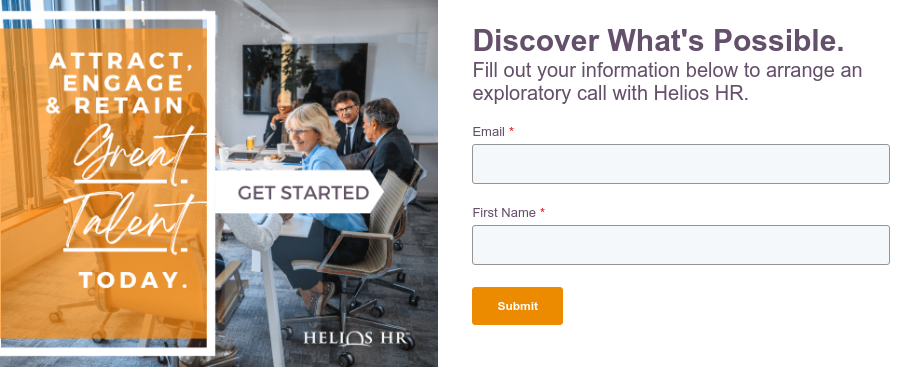By: Debra Kabalkin on January 18th, 2023
5 Reasons Why Employment Application Forms Are Still Necessary
Is it necessary for candidates to complete an employment application form when applying for your open position?
While most HR professionals and employment lawyers would unequivocally answer "YES," there are employers and industries that do not require applicants to fill out an employment application during the interview or new hire process.
Employers offer a multitude of reasons for not having an applicant fill out a job application. The most popular reasons we’ve heard include:
- "We need to get this position filled ASAP!"
- "Employment applications are not required by law, so what's the point?"
- "Every day we don’t have someone in the role, we are losing revenue.”
- "It’s just a silly form, what is the harm in not having it filled out?”
- "It slows our process down asking for this information.”
While these explanations might make sense in the short term, over the long haul, not providing your job applicants a form to fill out might harm your business more than if you had required them to fill out the application when you deemed them a qualified candidate.
5 Reasons Why Employers Should Still Use Employment Applications
As a Talent Acquisition advisor, I always recommend requiring an employment application to be filled out, and not just collecting a resume as a necessary step for all organizations, regardless of industry, for the following reasons:
- For screening candidates
- As legal documents
- To mitigate the risk of discrimination
- To organize information
- For compliance
1. For screening candidates
A resume alone cannot provide a comprehensive picture of an applicant's qualifications. Resumes allow applicants to selectively present information in order to create a favorable impression. They have the freedom to include or omit details that may not fully represent their skills and experience to recruiters or hiring managers.
In contrast, an employment application compels candidates to provide precise and comprehensive information about their professional background, previous employment, and salary history. Once a completed application is submitted, a recruiter or hiring manager will be able to determine if the candidate meets the minimum (and desired) qualifications of the job they are applying for.
Employers should not solely rely on resumes as part of the hiring process. It is essential to use both an application and a resume to ensure consistency in the applicant's background and experience. This consistency will play a crucial role in determining whether the candidate is qualified for the open position within your organization.
2. As a legal document
In contrast to a resume, an employment application holds the potential to transform into a legally binding document for your organization. It serves as a means to:
- Grant authorization for reference checks, background checks, and criminal history checks (where permissible).
- Ensure that the applicant acknowledges your organization's commitment to equal employment opportunity.
- Clarify that their employment is at will.
- Require them to attest to the accuracy and truthfulness of the information they provide.
Moreover, most employment applications include a section where candidates must certify that the information, they provide is complete and accurate by asking for the job applicant signature. This section also serves to inform candidates that any misrepresentation or omission of facts may result in rejection of their application or, if hired, disciplinary action up to and including dismissal.
Unlike a resume, which lacks this level of agreement, not having an employment application puts your organization at a significant disadvantage if you discover information that contradicts what was stated on the resume.
3. To mitigate the risk of discrimination
Resumes can vary greatly in format, making it challenging for organizations to compare candidates without potentially discriminating against them. For example, including a date of birth on a resume could lead to age discrimination, while mentioning a street address or the name of a high school could unconsciously bias screeners against candidates from minority neighborhoods.
A properly formatted employment application standardizes the information a candidate provides when applying for a role. Here are some important elements to include in your employment application:
- Affirmation of equal opportunity: The organization should state that it is an equal opportunity employer and does not discriminate based on any protected attribute under federal or state laws.
- Employment at will: It is crucial to have a clear statement that employment is considered at will, meaning that it can be terminated by either party at any time and for any reason that is not prohibited by law.
- Background check consent: The organization should seek the applicant's authorization and approval to conduct background checks, reference checks, and any other verification of application information that is deemed necessary.
- Consideration of criminal convictions: It is important to inform applicants that a criminal conviction listed on the application will not automatically disqualify them from being hired. The company should consider factors such as the nature of the offense, the time elapsed since the conviction, and the responsibilities of the job being filled in order to determine employment eligibility.
- Falsification consequences: Applicants should be made aware that any falsification or omission of information in the application process may result in rejection of their application or, if already hired, disciplinary action up to and including termination of employment.
This approach also helps show that you provide equal-opportunity employment, which is an important part of your employer branding.
4. To organize information
Having all the necessary information in one place is crucial for determining an applicant's suitability for a role. Rather than requesting information at different times during the new hire process, it is much more efficient to have an employment application that captures all the relevant details.
By using a standard job application download form, companies can ensure that they don't overlook important information such as the applicant's name, phone number, mailing address, reference person, and a signature with a signature date. Additionally, a standardized format for work history, including the name of previous employers, start and end dates, and whether the positions were full-time or part-time, makes it easier to evaluate a candidate's suitability for the role.
In essence, having an employment application that gathers all the necessary information in one place saves both the company and the applicant valuable time and effort. It streamlines the hiring process and ensures that no crucial details are missed.
5. For compliance reasons
In the Washington D.C. metro area, there are numerous organizations that provide services to the U.S. Federal Government. In order to meet the government's requirements, these organizations are asked to gather additional information about candidates who apply for and are hired to provide these services.
Specifically, the U.S. Federal Government is interested in collecting and retaining applicant information related to race, gender, ethnicity, disability, and military service history. However, since this information cannot be included in the employment application itself, we recommend providing applicants with a voluntary self-identification form to capture this necessary information.
While this information is not used to select a candidate, it is necessary to complete a yearly Affirmative Action Plan (AAP). AAPs are required for all government contractors with 50 or more employees and $50,000 in government contracts. Having a standard application for employment can make this process much easier.
Beyond capturing race, gender and ethnicity, it is also a best practice to invite applicants to self-identify as a veteran or as an individual with a disability in the self-identification form.
Will you keep using employment applications?
As we've just discussed, it is crucial for your organization to prioritize requesting an employment application from applicants rather than solely relying on resumes. While it may require some initial effort to create and integrate an application into your new hire process, the advantages of having one far surpass the drawbacks of not having it.
Want to talk about RPO and building a winning recruitment strategy? Schedule a no-obligation call with a Helios HR consultant today.





